Jack Butler Yeats RHA (1871-1957)
Signature: signed twice lower right; titled on reverse; with McAlpine Collection stamp on reverse; also with Waddington Galleries label on reverse
Medium: oil on slateboard
Size: 8¾ x 14in. (22.23 x 35.56cm) Provenance: Victor Waddington (1946); The Collection of A. McAlpine; Waddington Galleries, London; Private collection Exhibited: 'Jack B. Yeats', Engineer's Hall, Dublin, 25 February to 5 March 1927, catalogue no. 2; 'Jack B. Yeats', Ruskin Galleries, Birmingham, 23 May to 4 June 1971, no. 18; 'Jack B. Yeats Retrospective Exhibition', Waddington Fine Arts, Montreal, 12 March to 5 April 1969, no. 1; 'Jack B. Yeats', Victor Waddington, London, 15 April to 8 May 1971, catalogue no. 1 (illustrated in catalogue); 'Jack B. Yeats', RHA Gallagher Gallery, Dublin, 16 February to 12 March 1995, catalogue no. 10 (listed and illustrated in catalogue, p.20 & 21 respectively); 'Jack B. Yeats: A Celtic Visionary', Manchester City Art Galleries, 9 March to 21 April 1996 (touring to Leeds City Art Gallery, 27 April to 2 June; Ormeau Baths Gallery, Belfast, 6 June to 6 July, catalogue no. 3 (illustrated in catalogue); 'Jack B. Yeats: Paintings and Works on Paper', Waddington Galleries and Theo Waddington Fine Art, London, 20 November to 21 December 1996; 'Jack B. Yeats: Amongst Friends', The Douglas Hyde Gallery, Trinity College, Dublin, 9 September to 14 October 2004, catalogue no. 7 (listed and illustrated in catalogue, p.40 & 241 respectively); 'Jack B. Yeats: Paintings, Watercolours & Drawings', Waddington Galleries, London, in association with Theo Waddington, 16 November to 17 December 2005 Literature: Pyle, Hilary, Jack B. Yeats: A Catalogue Raisonné of the Oil Paintings, Andre Deutsh, London, 1992, Vol. I, page 312, catalogue no. 344; also Vol. III (full page colour illustration, p.283); Rosenthal, T. G., The Art of Jack B. Yeats, Andre Deutsch, London, 1993, colour plate no. 38, illustrated p.85); British Art; A Selection from Waddington Galleries, Waddington Galleries, London, 1997, no. 41 (repro. in colour) In the 1920s Jack Yeats' style of oil painting underwent a radical transformation, moving from its early realism to its later more radical approach. His works of the mid 1920s including the present work, The Quay Worker's Home, belong to an interim p...Read more In the 1920s Jack Yeats' style of oil painting underwent a radical transformation, moving from its early realism to its later more radical approach. His works of the mid 1920s including the present work, The Quay Worker's Home, belong to an interim period in this development. In these paintings Yeats uses a murky palette where the paint is thickly applied so that it leaves an opaque quality. The subject of many of these works relate to urban themes or to the world of work especially that connected to shipping and the sea. Yeats frequently painted the dock workers of Dublin port as well as the fishermen and pilot men of Sligo and Kinsale at this time. The Quay Worker's Home depicts a man standing in the dim interior of his modest home, an unusual subject for Yeats who normally presented the workers on the quayside or in the open air. The figure stands warming his hands by the fire, with his back to the mantelpiece. The light of the fire casts a warm glow on the crowded interior of the room. Its yellow, pink and orange embers are reflected across the floor and furniture. A brown painted dresser stacked with delph dominates the back wall. Beside the man stands a low bench with a basin filled with water, which he presumably used to wash himself after his return from work. The ashen faced quay worker in his open shirt stares dejectedly straight ahead. The greyish tones of his flesh are echoed in the oblong form to the left of the dresser that may represent an opening into another room. The cluttered arrangement of the contents of his home jar with the evident tension of the man who seems strangely alienated from his domestic surroundings. The fact that the figure is alone in his home further enforces this idea of isolation. The deep empathy that Yeats felt towards the plight of working men and women is evident in this painting. It is a remarka
Jack Butler Yeats RHA (1871-1957)
Signature: signed twice lower right; titled on reverse; with McAlpine Collection stamp on reverse; also with Waddington Galleries label on reverse
Medium: oil on slateboard
Size: 8¾ x 14in. (22.23 x 35.56cm) Provenance: Victor Waddington (1946); The Collection of A. McAlpine; Waddington Galleries, London; Private collection Exhibited: 'Jack B. Yeats', Engineer's Hall, Dublin, 25 February to 5 March 1927, catalogue no. 2; 'Jack B. Yeats', Ruskin Galleries, Birmingham, 23 May to 4 June 1971, no. 18; 'Jack B. Yeats Retrospective Exhibition', Waddington Fine Arts, Montreal, 12 March to 5 April 1969, no. 1; 'Jack B. Yeats', Victor Waddington, London, 15 April to 8 May 1971, catalogue no. 1 (illustrated in catalogue); 'Jack B. Yeats', RHA Gallagher Gallery, Dublin, 16 February to 12 March 1995, catalogue no. 10 (listed and illustrated in catalogue, p.20 & 21 respectively); 'Jack B. Yeats: A Celtic Visionary', Manchester City Art Galleries, 9 March to 21 April 1996 (touring to Leeds City Art Gallery, 27 April to 2 June; Ormeau Baths Gallery, Belfast, 6 June to 6 July, catalogue no. 3 (illustrated in catalogue); 'Jack B. Yeats: Paintings and Works on Paper', Waddington Galleries and Theo Waddington Fine Art, London, 20 November to 21 December 1996; 'Jack B. Yeats: Amongst Friends', The Douglas Hyde Gallery, Trinity College, Dublin, 9 September to 14 October 2004, catalogue no. 7 (listed and illustrated in catalogue, p.40 & 241 respectively); 'Jack B. Yeats: Paintings, Watercolours & Drawings', Waddington Galleries, London, in association with Theo Waddington, 16 November to 17 December 2005 Literature: Pyle, Hilary, Jack B. Yeats: A Catalogue Raisonné of the Oil Paintings, Andre Deutsh, London, 1992, Vol. I, page 312, catalogue no. 344; also Vol. III (full page colour illustration, p.283); Rosenthal, T. G., The Art of Jack B. Yeats, Andre Deutsch, London, 1993, colour plate no. 38, illustrated p.85); British Art; A Selection from Waddington Galleries, Waddington Galleries, London, 1997, no. 41 (repro. in colour) In the 1920s Jack Yeats' style of oil painting underwent a radical transformation, moving from its early realism to its later more radical approach. His works of the mid 1920s including the present work, The Quay Worker's Home, belong to an interim p...Read more In the 1920s Jack Yeats' style of oil painting underwent a radical transformation, moving from its early realism to its later more radical approach. His works of the mid 1920s including the present work, The Quay Worker's Home, belong to an interim period in this development. In these paintings Yeats uses a murky palette where the paint is thickly applied so that it leaves an opaque quality. The subject of many of these works relate to urban themes or to the world of work especially that connected to shipping and the sea. Yeats frequently painted the dock workers of Dublin port as well as the fishermen and pilot men of Sligo and Kinsale at this time. The Quay Worker's Home depicts a man standing in the dim interior of his modest home, an unusual subject for Yeats who normally presented the workers on the quayside or in the open air. The figure stands warming his hands by the fire, with his back to the mantelpiece. The light of the fire casts a warm glow on the crowded interior of the room. Its yellow, pink and orange embers are reflected across the floor and furniture. A brown painted dresser stacked with delph dominates the back wall. Beside the man stands a low bench with a basin filled with water, which he presumably used to wash himself after his return from work. The ashen faced quay worker in his open shirt stares dejectedly straight ahead. The greyish tones of his flesh are echoed in the oblong form to the left of the dresser that may represent an opening into another room. The cluttered arrangement of the contents of his home jar with the evident tension of the man who seems strangely alienated from his domestic surroundings. The fact that the figure is alone in his home further enforces this idea of isolation. The deep empathy that Yeats felt towards the plight of working men and women is evident in this painting. It is a remarka
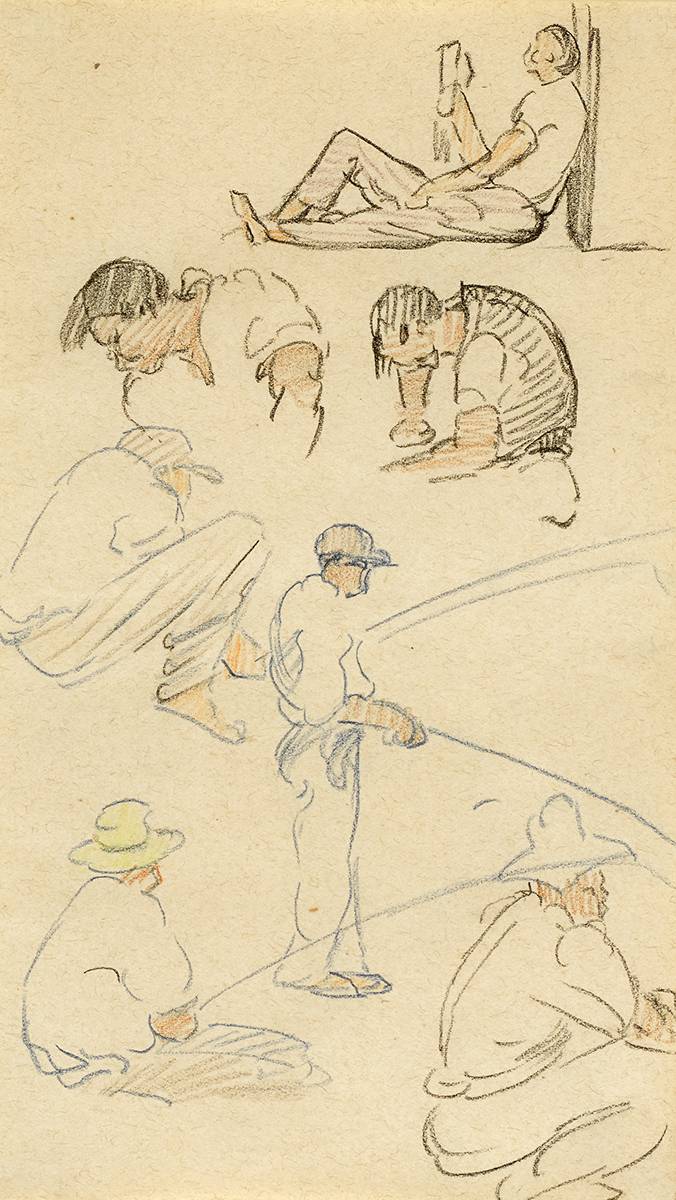
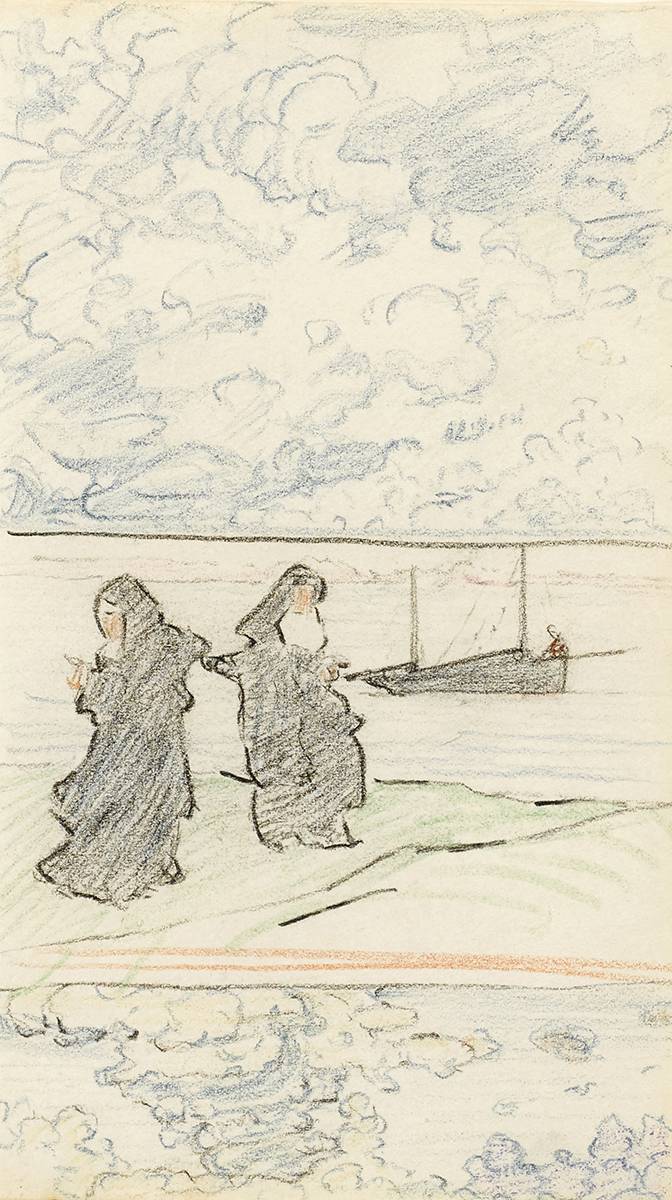
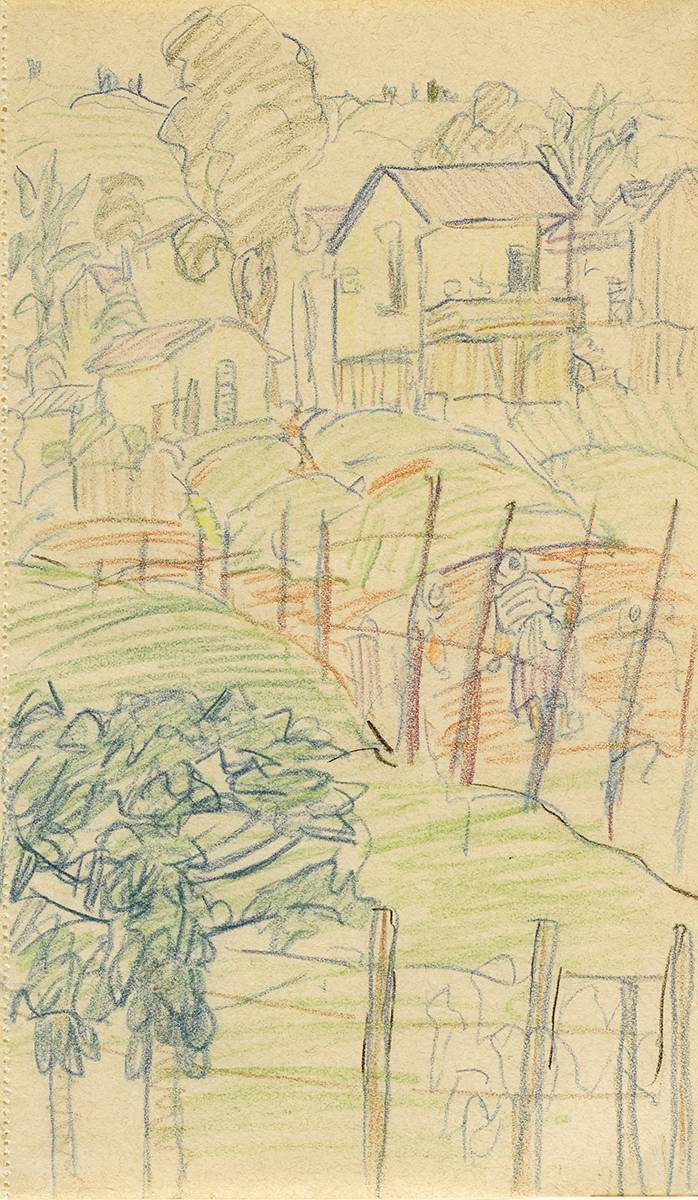
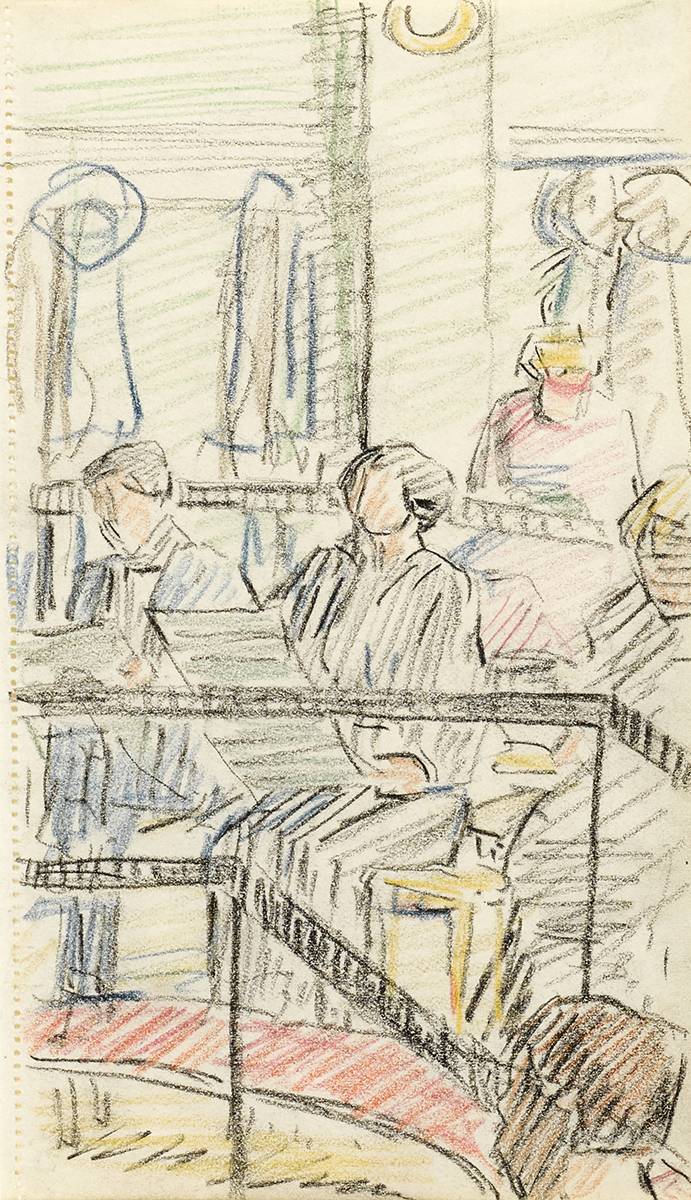
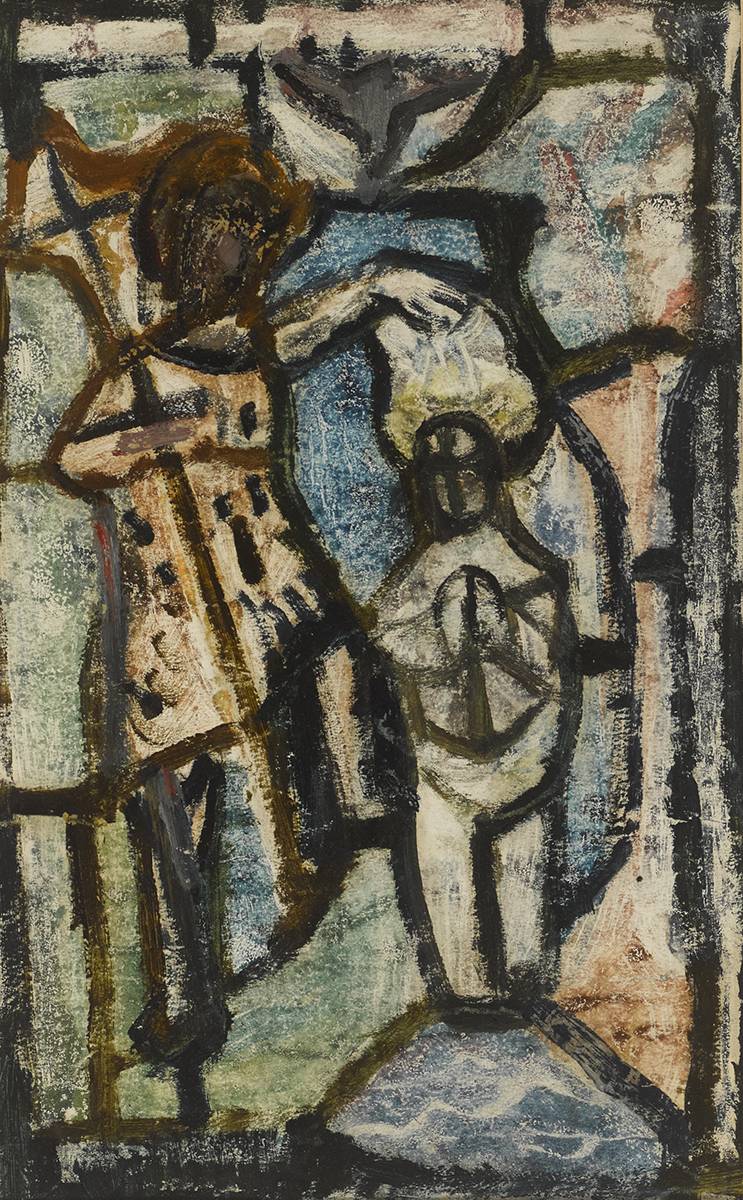
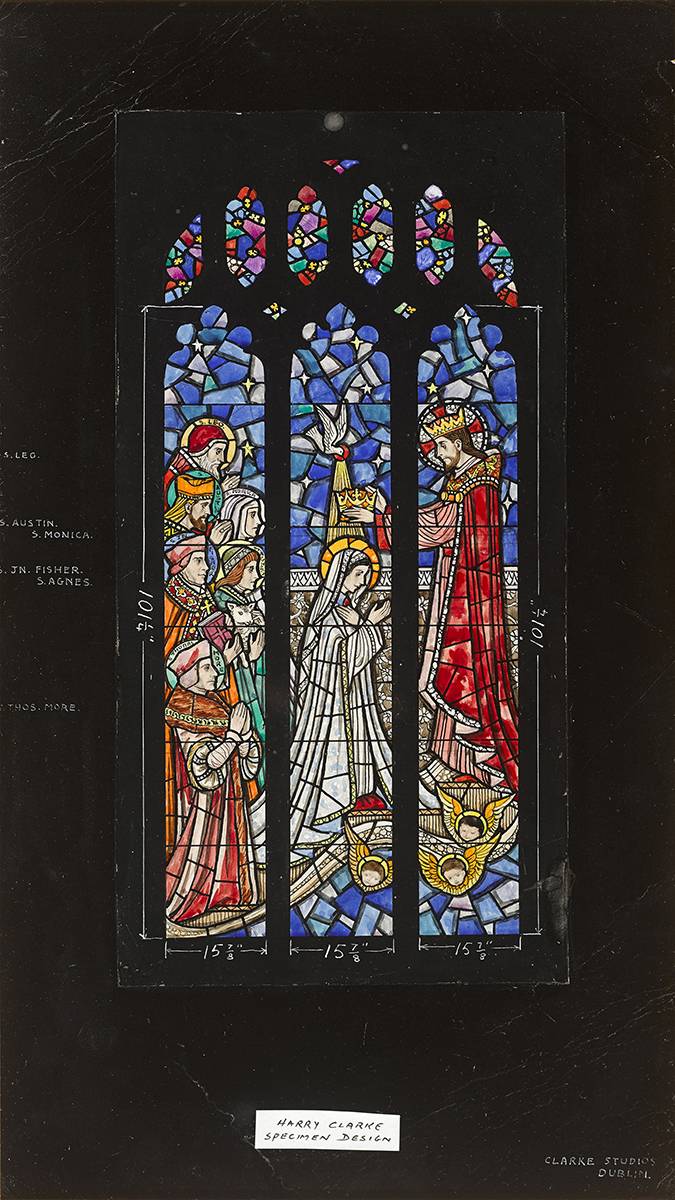
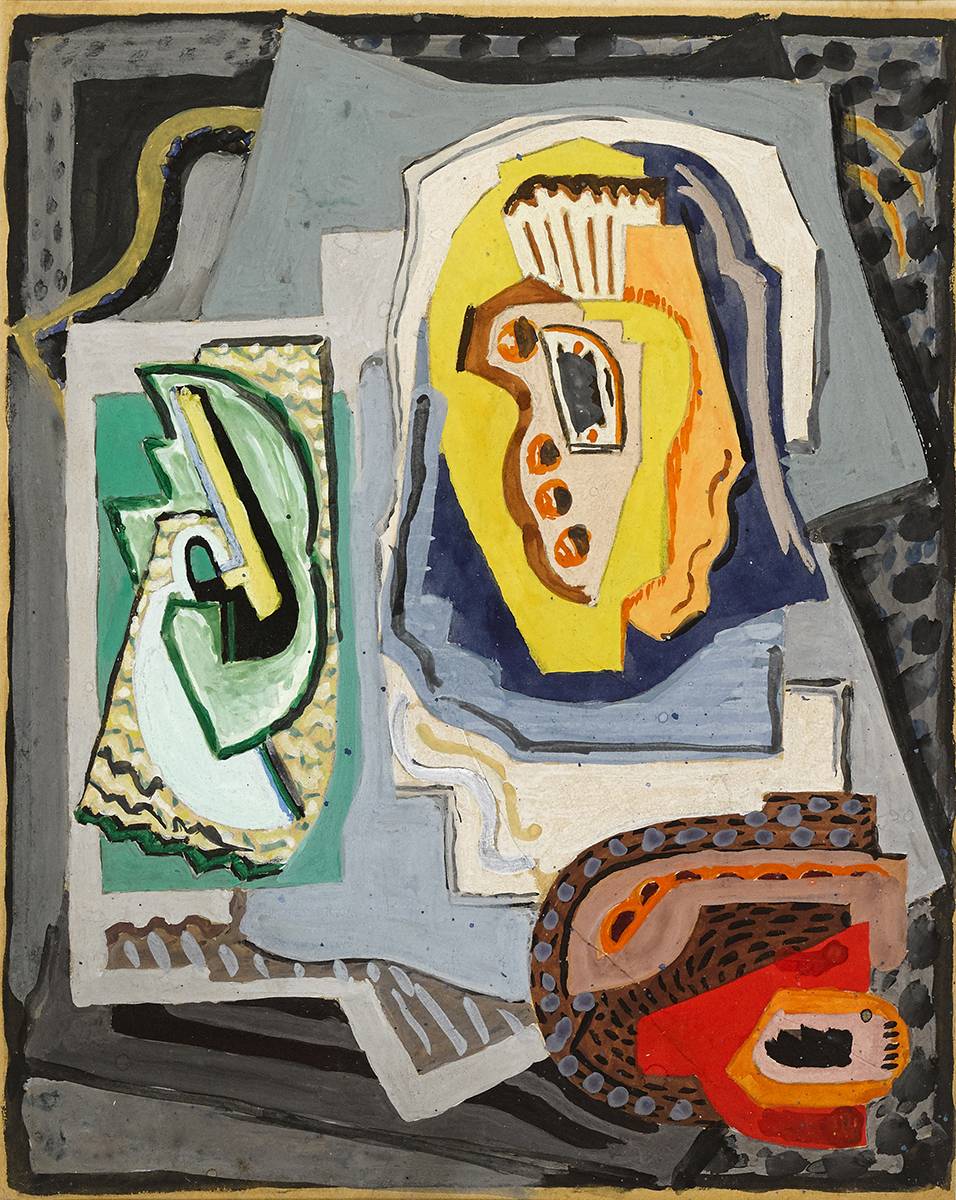
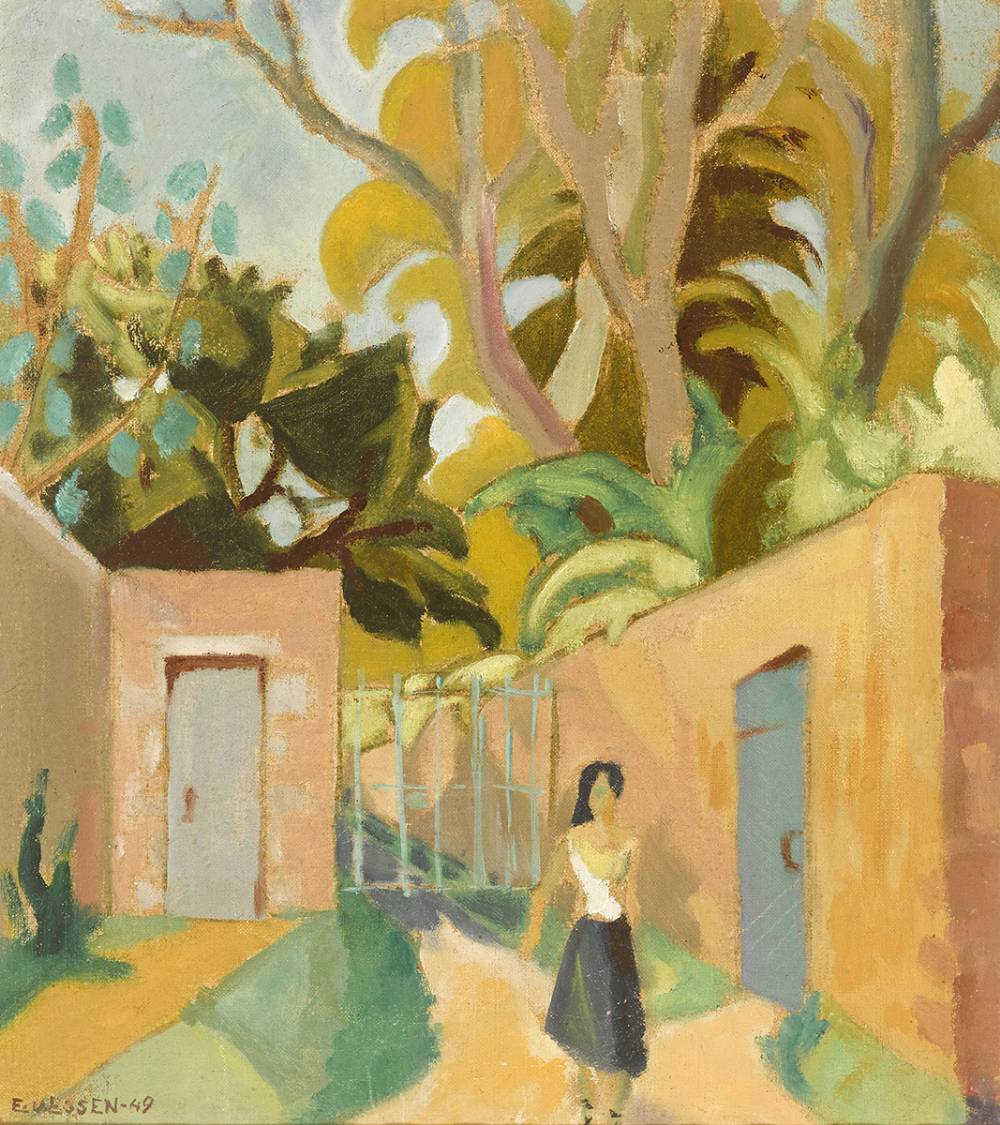
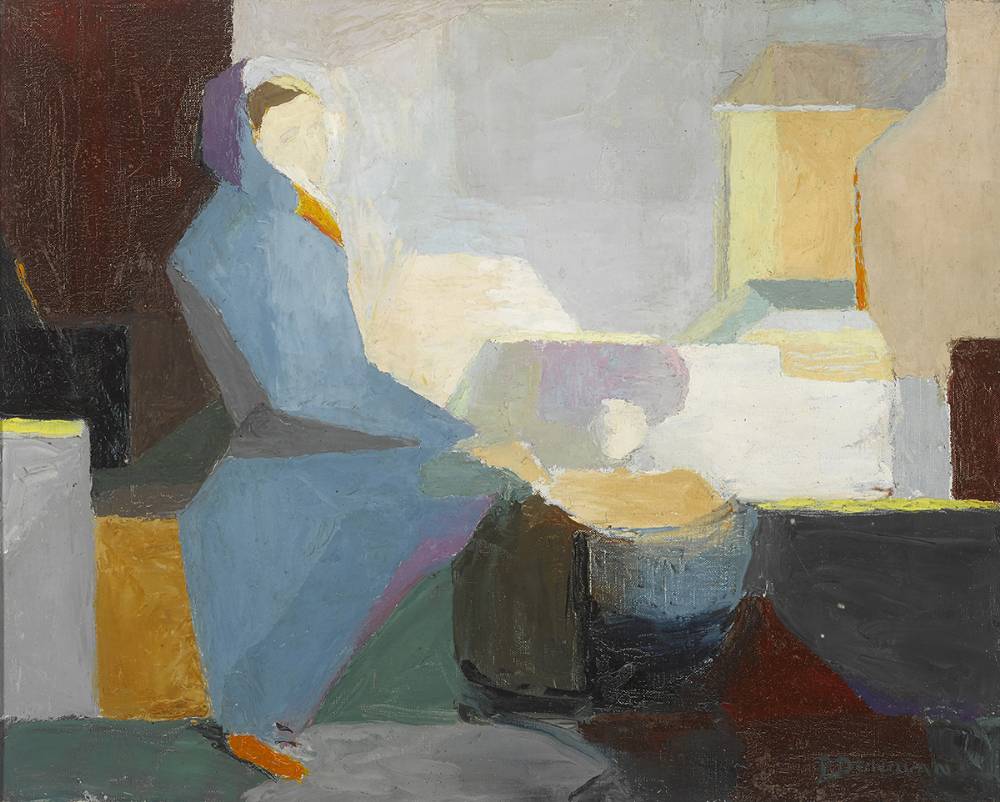
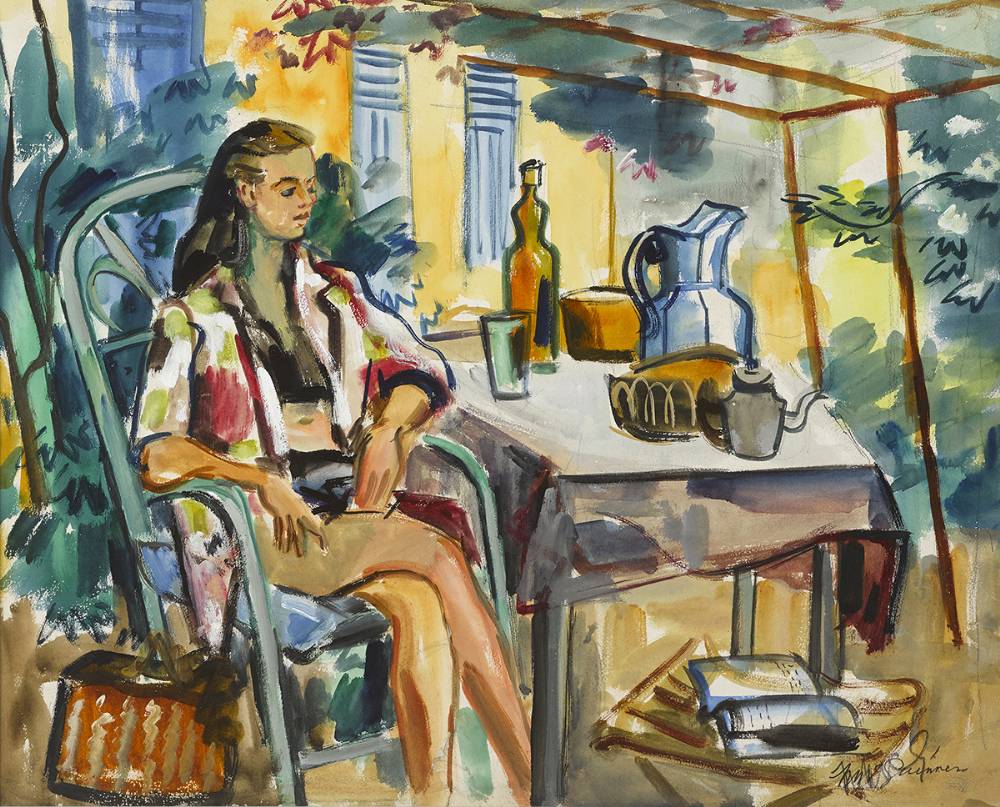
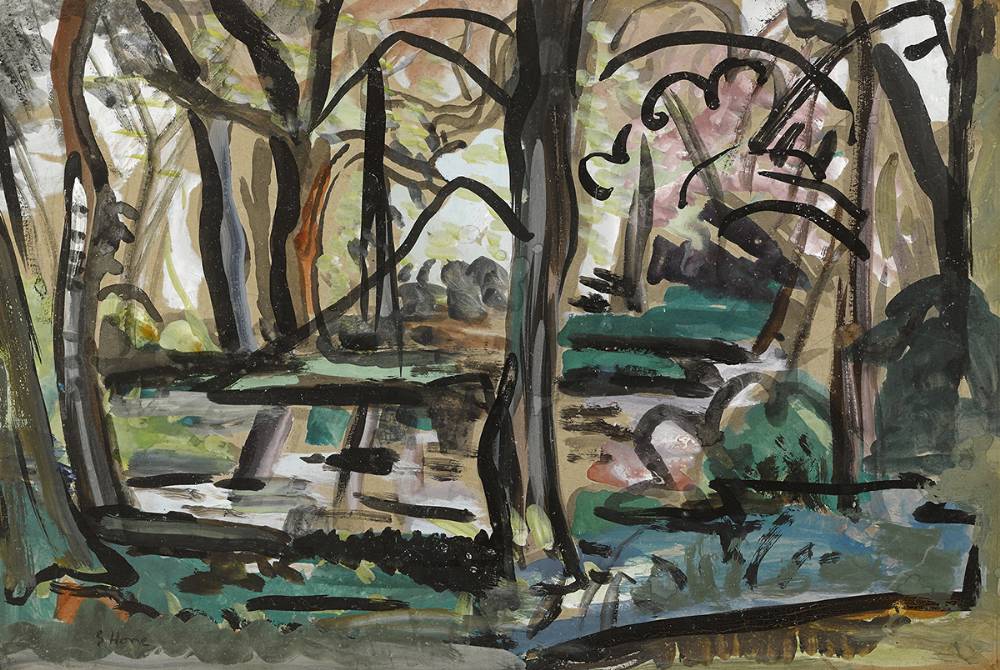
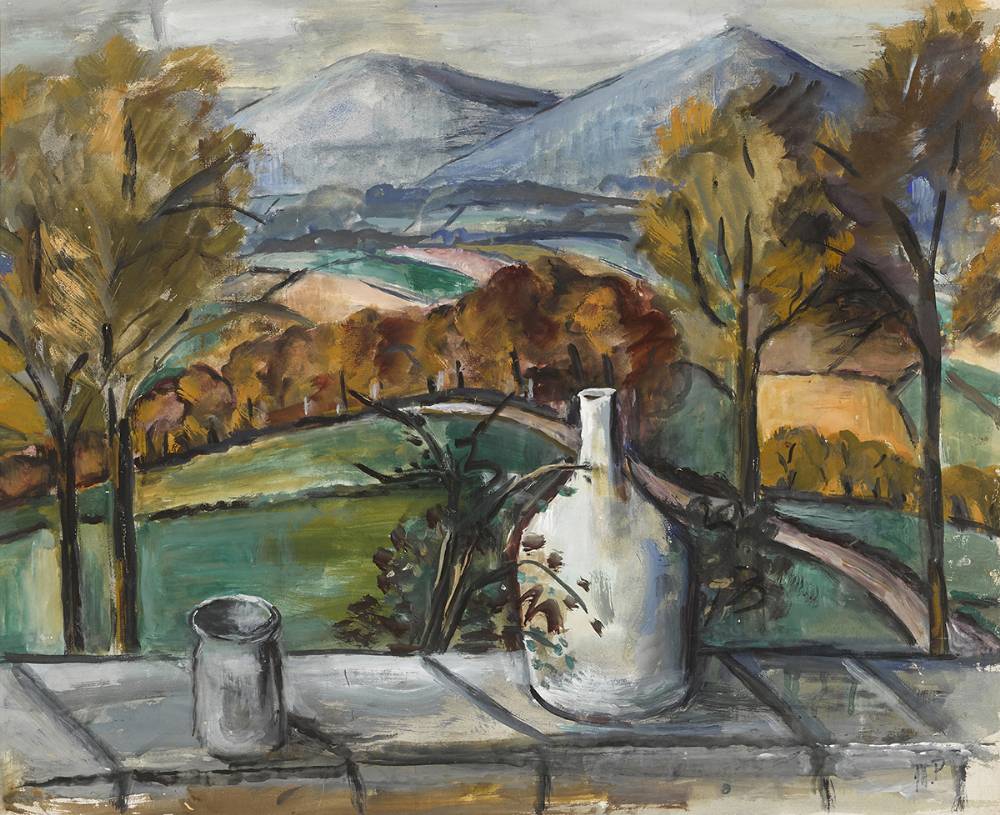
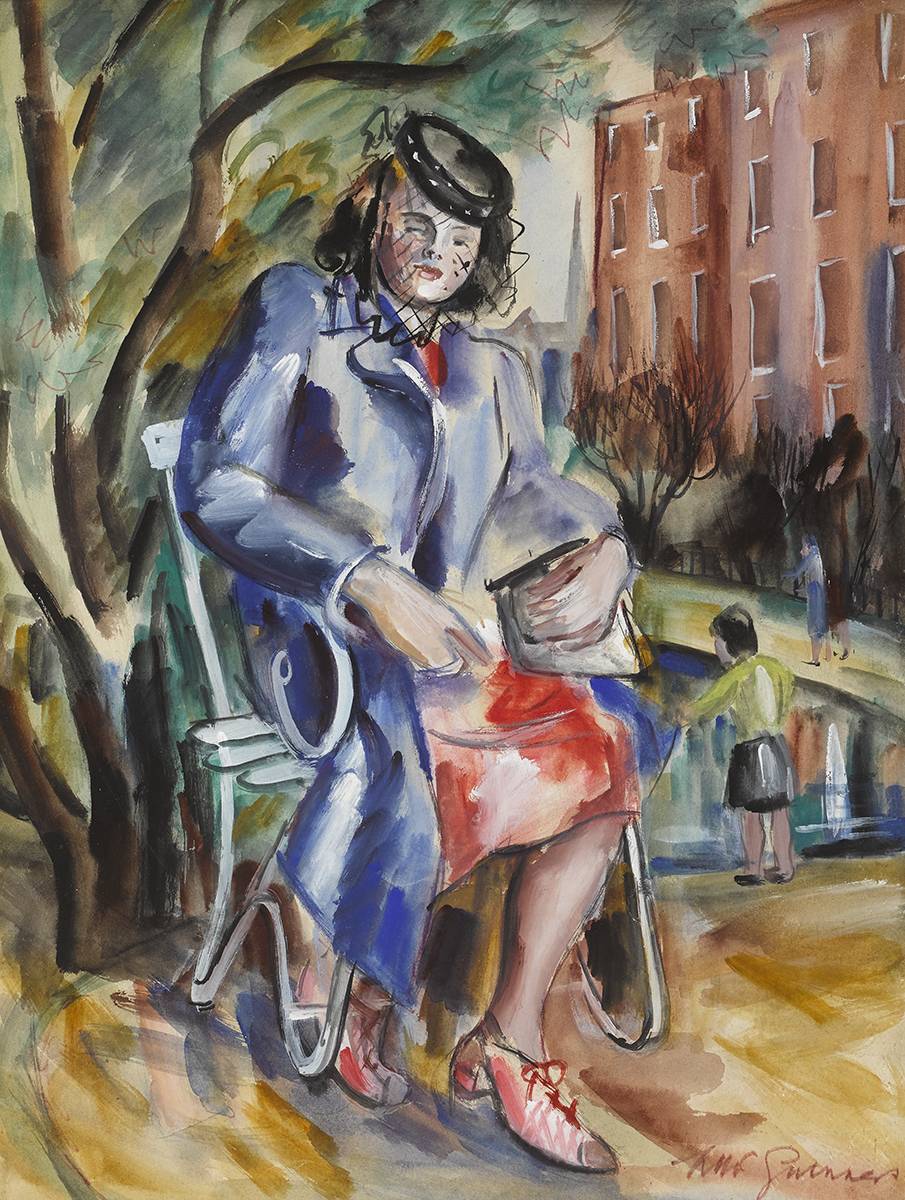
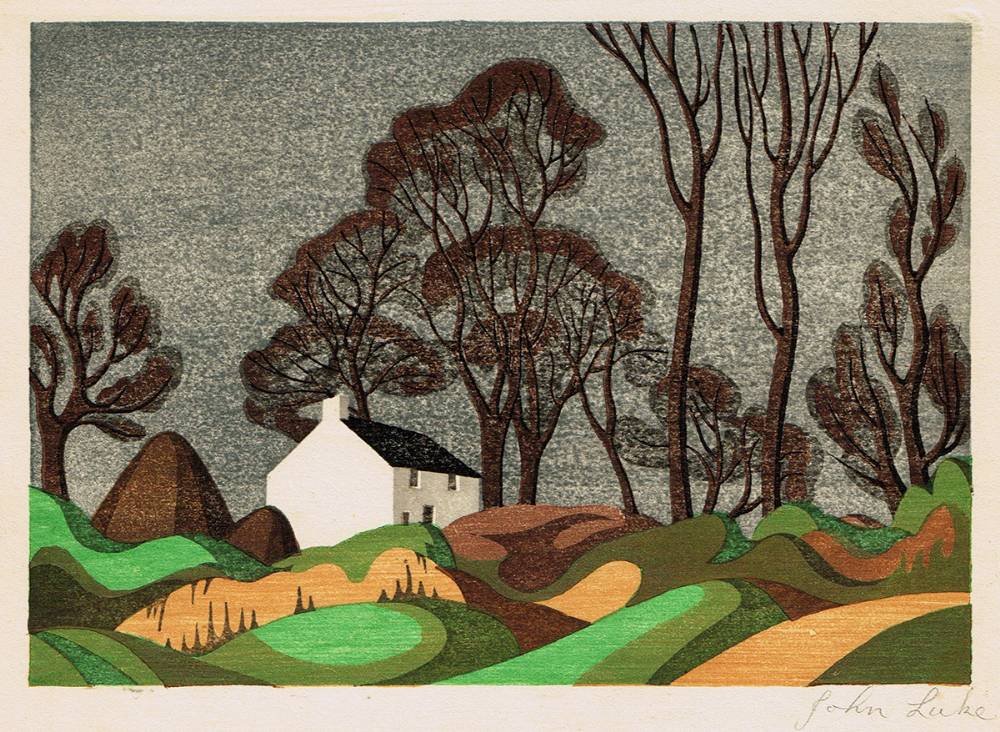
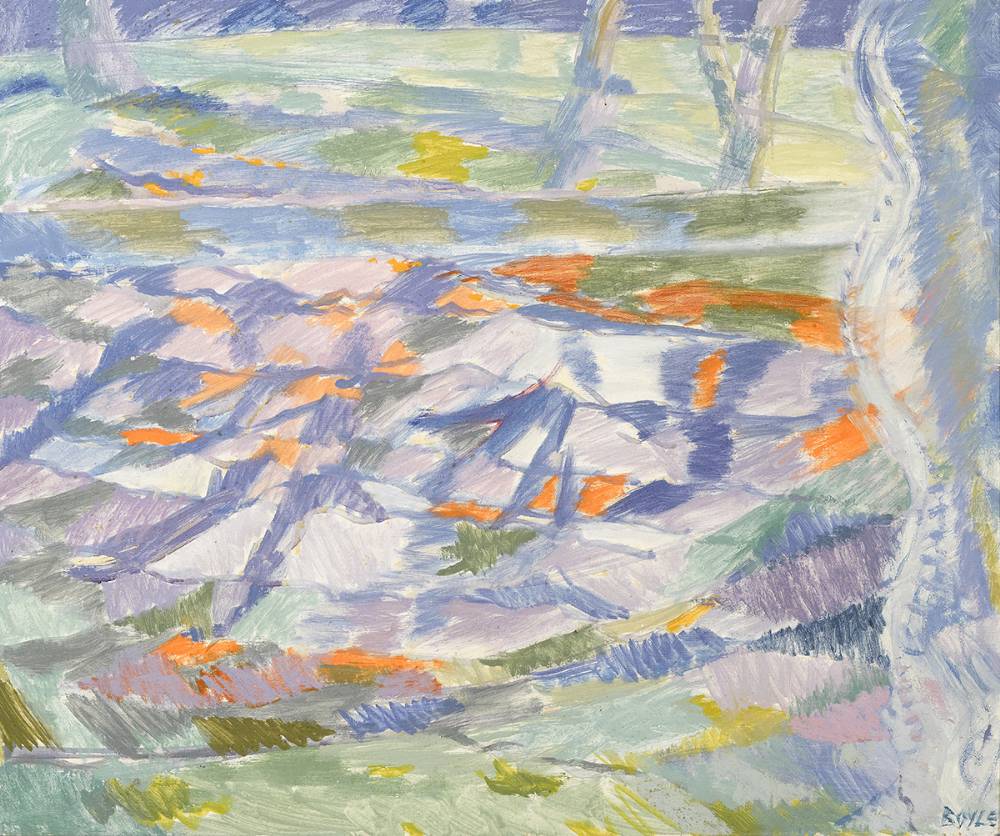
Testen Sie LotSearch und seine Premium-Features 7 Tage - ohne Kosten!
Lassen Sie sich automatisch über neue Objekte in kommenden Auktionen benachrichtigen.
Suchauftrag anlegen